In my time in the state, I learned that North Dakota is about three things: Agriculture, Air Force and Indians. (It turns out there is a fourth, but more about that in another post)
The Eastern border of North Dakota is formed by the Red River and dominated by two sizable cities on its banks. To the South is Fargo, at the intersection of the only two Interstates that cross the state. Fargo boasts the top North Dakota population of 120 thousand, about the same as Athens, GA. The economy of Fargo is based on healthcare and education. To the North lies Grand Forks, where most folks work for the government. Specifically, a lot of them work at the Grand Forks Air Force Base.
I set up basecamp near Grand Forks at Turtle River State Park. Unlike most of the Michigan parks I had become used to, this one featured wooded pull-through sites with both water and electricity. The campsites were fairly close together but laid out so there were trees and brush separating them to afford more privacy and shade than the open field model favored by Michigan’s DNR. And of course, having a standpipe is always a plus – no noisy water pump!
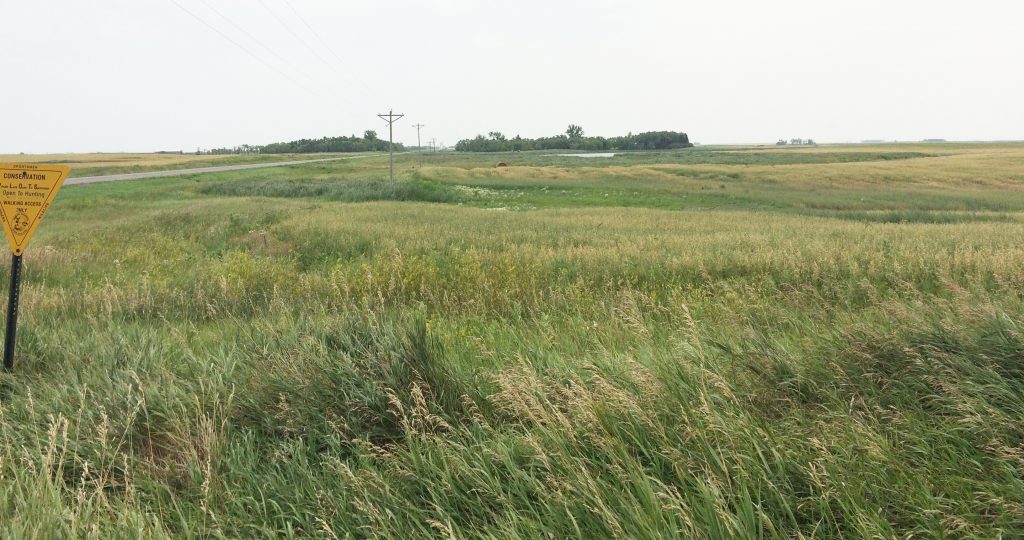
There were two places I wanted to visit in the area – both decommissioned Cold War facilities. First up was a mothballed Minuteman III missile site near Cooperstown, thirty miles to the Southwest.
Let’s play Global Thermonuclear War
Ronald Reagan Minuteman Missile Site is all that remains of an array of 150 silos and corresponding control centers, called a Missile Wing by the Air Force. This Wing was closed down by the START treaty when the USA and USSR agreed to reduce the number of nuclear warheads in their respective inventories. The Air Force had six such Missile Wings and agreed to dismantle half of them. The “Missileers” who manned the underground control centers were officers based out of the Grand Forks Air Base, driven to their bunkers sixty feet underground and locked in.
The museum consists of two separate sites surrounding the small town of Cooperstown. As I approached from the East, the first I encountered was the November 33 Launch Facility where a Minuteman III missile silo was located. Interestingly, despite their proximity the November 33 missile was not normally the responsibility of the Oscar Zero Launch Control Center (LCC) I would visit shortly. However, the system was designed to allow any LCC to launch any of the other missiles in the wing in case of malfunction or destruction of its primary control center.
The launch sites themselves are virtually invisible from the highway. All that you see above ground is a small square of security fence with a few pipes and posts sticking up. But once you know what to look for, you start seeing them everywhere as you drive across the prairie. Around Grand Forks they have are all been decommissioned, so all that remains are the fenced-in plots, often used to protect farm equipment or hay bales. As I would discover later near Minot, in other areas the silos still contain live nuclear warheads, their presence betrayed by the white Doppler radar motion detectors and Property of US Air Force warning signs.
These launch sites were designed to be unmanned but monitored 24/7. If a jackrabbit or tumbleweed moved inside the security fence an alarm went off in the control center. From there, three-man armed security teams were dispatched to investigate. Unlike the Missileers, the security guys were enlisted Airmen who lived full time at the LCC along with a cook and a facility manager. Maintenance and repair crews were dispatched from Grand Forks as needed like the launch control officers.
The topside building existed merely to house support personnel and protect the actual control center buried 75 feet below. An elevator descended to a small atrium between two thick reinforced concrete capsules, one for the Missileers and one for critical equipment that allowed the facility to operate independently of local utilities. The door to the control capsule could only be opened from the inside and officers were never allowed to be alone there.
If you’ve seen the opening sequence to the movie War Games, you’ve got a pretty good idea how a real LCC operates. The locked red box containing launch codes, the two keys that must be turned simultaneously, all that is true. What the movie doesn’t tell you is that at the nukes won’t fly unless at least two LCCs initiate a launch. There were a few other safeguards as well, and of course the military isn’t showing you the current technology here, only what was in place when this missile wing was decommissioned in the Eighties.
The site in Cooperstown North Dakota is run by the State Historical Society. I understand there is another operated by the National Park Service near Rapid City South Dakota that has a more polished tour and attracts more visitors due to proximity to the Interstate. Either is well worth visiting. As a record of an important time in history these sites are interesting, but I suggest you don’t think too hard about the fact that there are still hundreds of these monster bombs lurking in other silos that are quite capable of ending life on earth as we know it. Sobering stuff.
The North Dakota Pyramid
The Internet was designed to contain the totality of mankind’s knowledge, but that isn’t limited to just truth. There are plenty of wacked-out tales about the purpose behind the “mysterious pyramid of North Dakota”, but it seems it was either the reason the Cold War ended or a colossal waste of taxpayer money, depending on your perspective.
The pyramid is the most recognizable structure of the decommissioned Stanley R Mickleson Safeguard Complex, an anti-ballistic missile system that was supposed to intercept incoming ICBMs aimed at the Grand Forks Minuteman silos. There were two parts to the Safeguard system: a high powered radar that watched for rockets coming over the North Pole and an array of fast interceptor missiles that were supposed to destroy them before they reached their targets.
The facility was in operation for less than a year before it was shut down by the government and the missiles removed in 1976. Some say the Russians ended the cold war because they believed Safeguard would give the US a first-strike capability the USSR could not counter. Others believe the program was scrapped in fear of public reaction when it became widely known the military planned to shower thousands of miles of the US and Canada with fallout in order to protect their own nukes.
Whatever the truth, the odd five-story radar pyramid and support buildings are still there in Nekoma just South of the Canadian border. The base was stripped of military equipment and the land sold to a group of religious pacifists. They farm the land and use some of the unused buildings to winter their bees-for-hire business. Delicious irony.
Here’s a link to a more extensive photo essay from photographers who were able to go inside of the facility. If you search YouTube you’ll find videos as well.
Next time: Central North Dakota – Devils Lake to Minot
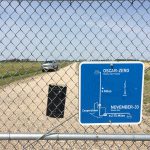
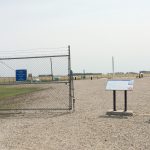
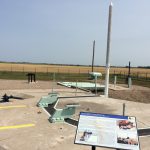
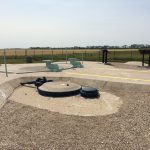
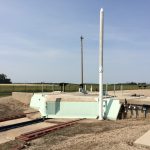
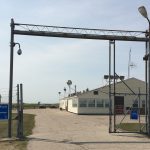
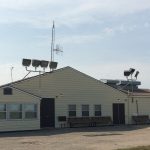
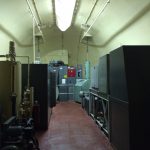
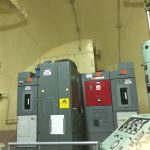
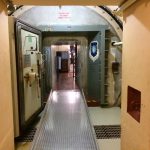

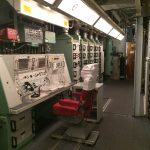
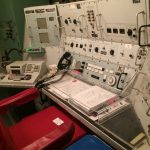
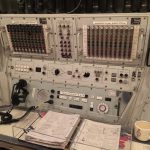
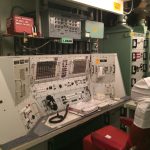
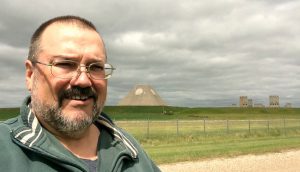
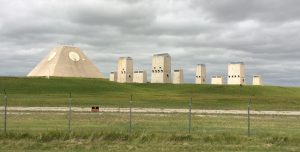
Fascinating! Spooky! What an enormous amount of invention, energy, and money, standing buried in the Northern Plains, like the statue of Ozimandius.
Did you visit Nekoma along the way? Looks like an interesting, almost-ghost town. The link you posted was most informative about the Pyramid. Especially the comments by people who had lived and worked there before. The guy who runs the link calls himself “a gentleman adventurer.” Sounds like somebody else I know.
No, I found myself out on a narrow track heading toward a distant farm. Luckily I eventually found my way back to pavement, as there was no place to turn around with the trailer. By the time I made it back to the highway I had looped around Nekoma. I have no doubt its fate is very much like that of Fortuna, which has suffered a similar decline since their own air base shut down. More on that in a couple posts!
Okay you got me on that one – had to look it up. Poetry is not my forte…